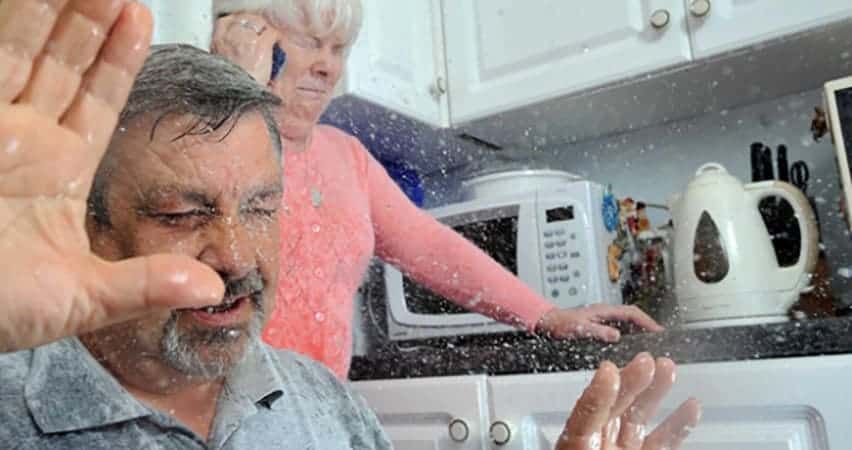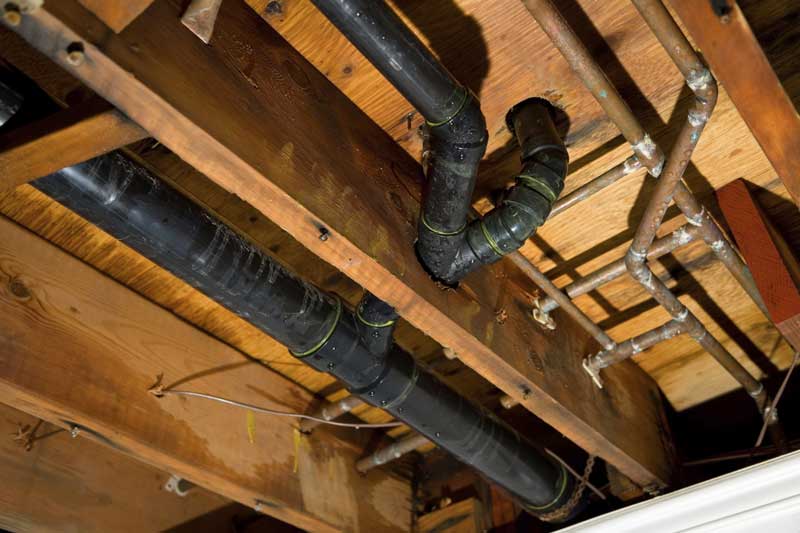Useful Tips for Solving Plumbing Issues in Older Homes
Useful Tips for Solving Plumbing Issues in Older Homes
Blog Article
Just how do you really feel in relation to Main Plumbing Issues Found in Old Houses?

Older homes frequently feature beauty, character, and background, but they can additionally bring a host of plumbing concerns. Whether you're dealing with maturing pipelines, low water stress, or leaks, recognizing exactly how to address these typical issues is vital to maintaining a secure and useful home. In this guide, we'll check out the normal pipes obstacles encountered by older homes and offer functional solutions to maintain your pipes in leading form.
Understanding Common Plumbing Concerns
Aging Pipes
One of the most typical problems in older homes is maturing pipes. Depending on the age in which your home was built, the pipes may be made from products that have weakened with time, such as galvanized steel, cast iron, or even lead. These materials can wear away, become fragile, or create leakages, leading to water damages and prospective health hazards.
Low Tide Stress
If you're experiencing low water stress, maybe because of natural resources, corrosion inside the pipelines, or old components that are no longer functioning successfully. This can be a major inconvenience, especially in locations like showers and sinks.
Leaking Pipes
Leakages are another frequent problem in older homes, often brought on by corroded or worn-out pipes. Also little leakages can lead to significant water damage, mold and mildew growth, and boosted water costs otherwise addressed without delay.
Obsolete Fixtures
Outdated plumbing fixtures such as faucets, commodes, and showerheads not just look old but may also be less reliable, vulnerable to leakages, or inappropriate with contemporary plumbing standards.
Pipeline Deterioration
Deterioration is a common trouble in older pipes, particularly those made from galvanized steel or cast iron. Corroded pipelines can limit water circulation, create staining, and at some point bring about leakages or pipe bursts.
Analyzing the Problem of Your Pipes
Evaluating Visible Pipelines
Start by checking any kind of visible pipes in your home, such as those in basements, crawl spaces, or under sinks. Look for indicators of rust, leaks, or corrosion, which can show underlying concerns.
Looking for Leaks
Check for leakages by examining locations around faucets, bathrooms, and under sinks. You can likewise check your water meter before and after a duration of no water use to find covert leaks.
Water Quality Testing
Older pipelines can influence the quality of your water. Conduct a water high quality examination to check for contaminants such as lead, corrosion, or various other contaminations that might be presented by aging pipes.
Solutions for Usual Plumbing Concerns
Changing Aging Pipes
If your home has old, deteriorating pipelines, consider replacing them with modern-day materials like copper or PEX. This can be a significant investment, yet it will avoid future issues and enhance the safety and security and reliability of your pipes system.
Dealing With Low Water Pressure
To take care of low water stress, begin by cleansing or changing old fixtures and removing mineral build-up in the pipelines. If the trouble lingers, it might be essential to change sections of corroded pipelines.
Repairing and Replacing Dripping Pipes
For little leaks, you can use pipeline clamps or epoxy putty as a temporary repair. Nonetheless, it's best to replace dripping pipelines totally to stay clear of more damages.
Upgrading Fixtures
Upgrading old fixtures to modern, water-efficient models can boost your home's pipes efficiency and minimize water intake. Look for components with the WaterSense tag for the very best performance.
Managing Pipeline Deterioration
If your pipes are corroded, changing them with corrosion-resistant materials like copper, PVC, or PEX is the very best option. Routine evaluations and water high quality upkeep can assist stop additionally deterioration.
When to Call an Expert
While some plumbing problems can be handled with do it yourself services, there are times when it's finest to hire an expert. If you're handling significant leakages, considerable deterioration, or are uncertain regarding the problem of your pipelines, a certified plumbing can supply expert evaluation and repair.
Preventive Upkeep Tips
Regular Inspections
Regularly evaluate your plumbing system for indicators of wear and tear. Catching issues early can protect against costly repair work down the line.
Water Stress Policy
Guarantee your water stress is within the suggested array to stay clear of stressing your pipes and components. A plumbing can install a pressure regulator if required.
Water High Quality Upkeep
Set up water filters or conditioners if your water top quality is poor. This can secure your pipelines and components from damages triggered by hard water or pollutants.
Proactive Pipe Substitute
If your home has older pipes, consider aggressive substitute prior to significant problems arise. This can conserve you from emergency repair work and water damage.
Final thought
Taking care of plumbing problems in older homes calls for a mix of watchfulness, precautionary maintenance, and prompt upgrades. By understanding the usual challenges and understanding when to seek specialist help, you can ensure your pipes system continues to be functional and reliable for years ahead.
Common Plumbing Issues in Older Homes and How to Fix Them
Owning an older home in Australia comes with its unique charm and a set of challenges, especially when it comes to plumbing. The Sunshine Coast has many older properties that can harbour plumbing problems that aren t just inconvenient but potentially costly. Here s a look at some common plumbing issues in older homes and expert advice on how to handle them.
Outdated Piping Materials
Many older homes were built with galvanised steel, cast iron, or even lead pipes, materials that are far from ideal by today s standards. Galvanised pipes are prone to corrosion and clogging, while lead pipes pose serious health risks.
How to Fix:
Replacing old pipes is a job for a professional. Upgrading to copper or PVC piping not only enhances water quality and flow but also increases the property s safety and value. If you suspect your home has outdated materials, a licensed plumber can conduct a thorough inspection and recommend the best course of action.
Corrosion and Pipe Degradation
Over time, exposure to water and minerals can cause pipes to corrode, leading to leaks, bursts, and water contamination. Corrosion is especially common in homes over 50 years old.
How to Fix:
Regular inspections can catch early signs of corrosion. If corrosion is found, the affected section of piping often needs to be replaced. For homes with extensive corrosion, a complete plumbing overhaul might be necessary. It s crucial to consult with a plumbing expert to understand the extent of the issue.
Tree Root Intrusion
Older neighbourhoods usually have mature trees whose roots can intrude into pipe lines, causing blockages or damage. This is particularly problematic for sewer lines, where roots seek out water sources.
How to Fix:
A plumber can use a specialised camera to inspect sewer lines for root intrusion. If roots are a problem, methods like root cutting or hydro-jetting can clear the obstruction. In severe cases, part of the pipe may need replacing. Consider root barriers around the piping to prevent future issues.
Inadequate Water Pressure
Low water pressure in older homes can be due to various factors, including corroded water lines, sediment build-up in pipes, or outdated fixtures.
How to Fix:
First, check if the low pressure is isolated to one area or throughout the house. Replacing old fixtures can sometimes resolve the issue. However, if the problem is more widespread, it might be due to sediment or corrosion. Flushing the system or replacing the affected pipes usually restores normal pressure. Again, a professional assessment is advisable.
Outdated Fixtures
Older homes often feature fixtures that are not only visually dated but functionally inefficient. This includes everything from toilets and taps to showerheads and washing machine hoses.
How to Fix:
Updating these fixtures can improve both water efficiency and the aesthetic appeal of your home. Modern fixtures are designed to conserve water, which can significantly reduce your water bill and lessen your environmental impact.
Conclusion
Maintaining the plumbing in an older home requires a proactive approach. Regular checks and updates are key to preserving these beautiful properties. If you re facing plumbing issues in your older home, it s best to call on experienced professionals like Green & Gold Plumbing & Gas. With the right expertise, even the most daunting plumbing problems can be resolved, ensuring that your home s character is maintained while its functionality is enhanced.
https://gandgplumbing.com.au/common-plumbing-issues-in-older-homes-and-how-to-fix-them/

As a person who reads about Common Plumbing Challenges In Old Buildings, I was thinking sharing that piece of content was a good idea. Loved our content? Please share it. Help someone else check it out. We thank you for your readership.
Book Now! Report this page